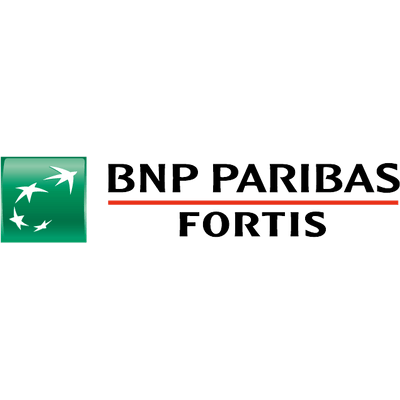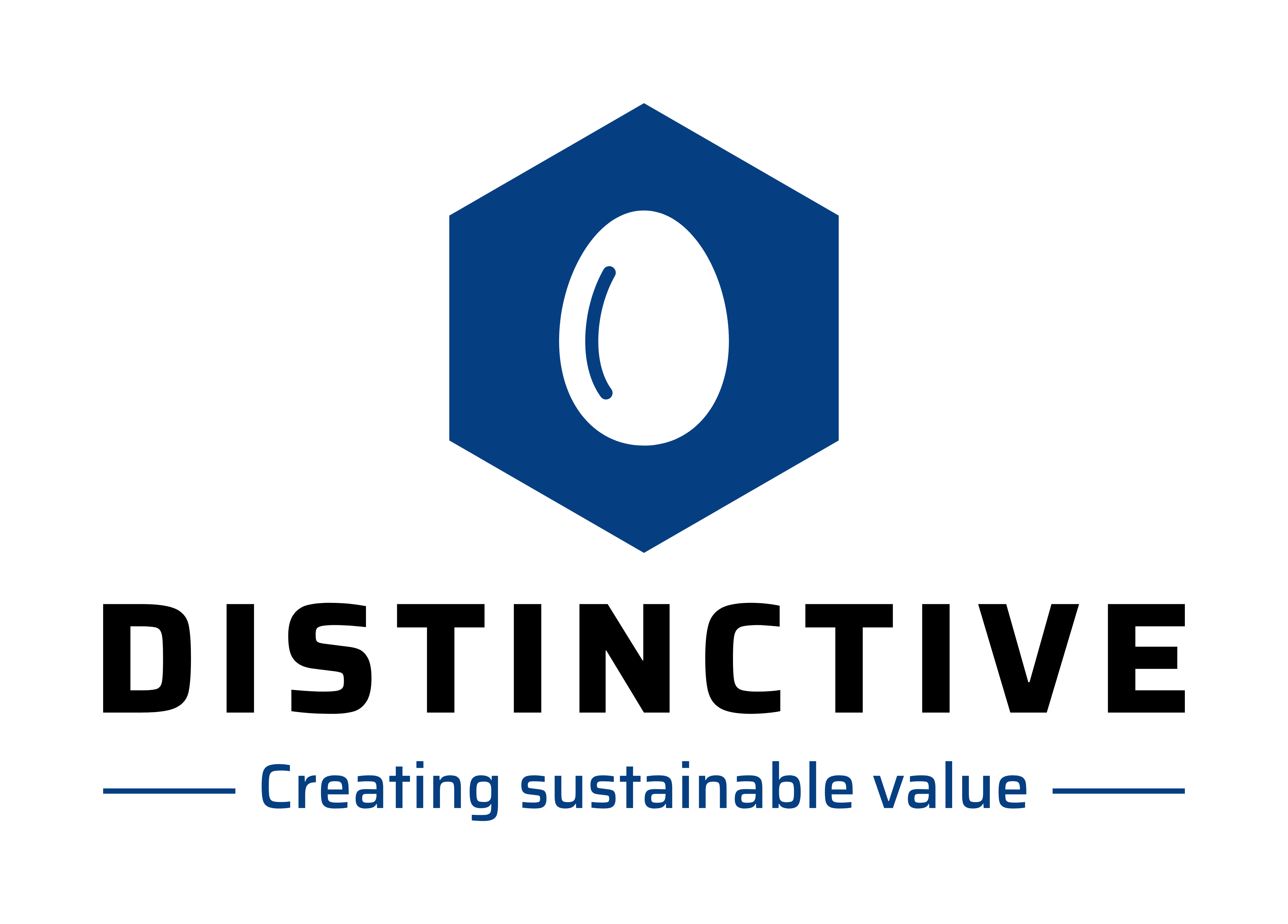Our Expertise
From IT to business oriented services, we have the knowledge and experience to help you go further.

The Distinctive Expertise
At Distinctive Advisory, our main expertise is helping our clients with the right people, having the knowledge and experience.
We bring support to all departments in organizations. From an operational point of view to teams until coaching the C-level.
They trust us

✓Agile Transformation
✓Coaching

✓Agile Transformation
✓Business Process Digitalisation with Robotics & AI

✓E-commerce
✓Agile Product Management

✓Business Analysis
✓Application development

✓Agile Transformation
✓Coaching
✓Delivery Management

✓Agile Transformation
✓Business Intelligence

✓Operational Excellence
✓Change Management

✓Agile Governance
✓Definition of Target Operating Model
✓Coaching
Fusce egestas elit eget lorem. Donec sodales sagittis magna. Vestibulum volutpat pretium libero. Integer ante arcu, accumsan a, consectetuer eget, posuere ut, mauris. Cras ultricies mi eu turpis hendrerit fringilla.


Fusce egestas elit eget lorem. Donec sodales sagittis magna. Vestibulum volutpat pretium libero. Integer ante arcu, accumsan a, consectetuer eget, posuere ut, mauris. Cras ultricies mi eu turpis hendrerit fringilla.
Articles
January 2022 : The Role of Agile in Digital Transformation
Introduction
Digital transformation is reshaping industries worldwide, and Agile methodology plays a pivotal role in this evolution. This article explores how Agile principles can drive successful digital transformation initiatives.
The Agile Advantage
Agile methodologies, characterized by iterative development, collaboration, and flexibility, offer several advantages:
- Speed and Responsiveness: Agile teams deliver small, incremental changes quickly, allowing for faster feedback and adjustments.
- Customer-Centric Approach: Continuous customer involvement ensures that the end product meets user needs.
- Risk Management: Frequent iterations help identify and mitigate risks early in the development process.
Agile and Digital Transformation
Digital transformation involves integrating digital technology into all business areas, fundamentally changing how companies operate and deliver value to customers. Agile supports this by:
- Encouraging Innovation: Agile’s iterative nature fosters a culture of continuous improvement and innovation.
- Enhancing Collaboration: Cross-functional Agile teams break down silos, promoting collaboration and communication.
- Improving Adaptability: Agile’s flexibility allows organizations to adapt quickly to changing market conditions and customer needs.
Case Studies
- Spotify: By implementing Agile, Spotify continuously evolves its product, delivering new features based on real-time user feedback.
- ING Bank: Agile transformation enabled ING to speed up product development cycles and respond swiftly to market changes.
Conclusion
Agile methodologies are instrumental in driving digital transformation. By fostering a culture of innovation, collaboration, and adaptability, Agile helps organizations navigate the complexities of the digital age.
Author : Omer SUSAM
March 2022 : Top 5 Agile Practices for Digital Transformation Success
Introduction
Successful digital transformation requires the adoption of Agile practices that foster flexibility, collaboration, and continuous improvement. Here are the top five Agile practices that can propel your digital transformation journey.
1. Scrum Framework
Scrum is one of the most popular Agile frameworks, providing a structured approach to iterative development. Key elements include:
- Sprints: Short, time-boxed iterations for delivering increments of the product.
- Scrum Ceremonies: Regular meetings (daily stand-ups, sprint planning, sprint reviews, and retrospectives) to ensure alignment and continuous improvement.
2. Kanban Method
Kanban focuses on visualizing work, limiting work in progress, and managing flow. Benefits include:
- Enhanced Visibility: Kanban boards provide a clear view of work status, bottlenecks, and priorities.
- Continuous Delivery: By limiting work in progress, teams can deliver value more consistently.
3. Continuous Integration/Continuous Deployment (CI/CD)
CI/CD practices automate the integration and deployment processes, enabling:
- Faster Delivery: Automated testing and deployment reduce manual effort and accelerate delivery cycles.
- Improved Quality: Continuous testing ensures that defects are identified and resolved early.
4. Test-Driven Development (TDD)
TDD emphasizes writing tests before code, promoting high-quality software development. Advantages include:
- Reduced Bugs: Early testing identifies defects before they reach production.
- Better Design: Writing tests first encourages better design decisions and cleaner code.
5. Agile Retrospectives
Regular retrospectives allow teams to reflect on their performance and identify improvement areas. Benefits include:
- Continuous Improvement: Teams can adapt their processes based on feedback and lessons learned.
- Enhanced Collaboration: Retrospectives foster open communication and collective problem-solving.
Conclusion
Implementing these Agile practices can significantly enhance your digital transformation efforts. By embracing Scrum, Kanban, CI/CD, TDD, and regular retrospectives, your organization can achieve greater agility, quality, and customer satisfaction.
Author : Omer SUSAM
June 2022 : How Agile Facilitates Digital Transformation in Large Enterprises
Introduction
Large enterprises often face unique challenges in digital transformation due to their size, complexity, and legacy systems. Agile methodologies can help overcome these challenges and facilitate successful transformation.
Challenges in Large Enterprises
- Complexity: Managing multiple teams, departments, and systems can be overwhelming.
- Resistance to Change: Established processes and cultures can hinder the adoption of new methodologies.
- Legacy Systems: Outdated systems may not support modern digital initiatives.
Agile Solutions
1. Scaling Agile Frameworks
Scaling frameworks like SAFe (Scaled Agile Framework) and LeSS (Large Scale Scrum) provide structures for implementing Agile across large enterprises. Key benefits include:
- Consistent Practices: Standardized processes and practices across teams.
- Alignment: Ensures that all teams are aligned with organizational goals and strategies.
2. Cross-Functional Teams
Agile encourages the formation of cross-functional teams that include members from different departments. Benefits include:
- Holistic Perspective: Teams can address problems from multiple angles.
- Faster Decision-Making: Reduced dependency on external approvals speeds up the decision-making process.
3. Incremental Legacy System Modernization
Agile promotes incremental improvements rather than massive overhauls. Strategies include:
- Phased Implementation: Gradually replacing legacy systems with modern solutions.
- Parallel Systems: Running old and new systems in parallel to ensure a smooth transition.
Case Studies
- General Electric (GE): GE implemented Agile practices to accelerate its digital transformation, resulting in faster product development and improved customer experiences.
- Barclays: Barclays adopted Agile to streamline its processes and enhance its digital offerings, leading to significant improvements in efficiency and customer satisfaction.
Conclusion
Agile methodologies provide the flexibility and structure needed to navigate the complexities of digital transformation in large enterprises. By scaling Agile practices, forming cross-functional teams, and incrementally modernizing legacy systems, large organizations can achieve successful digital transformation.
Author : Omer SUSAM
September 2022 : Agile Mindset: The Key to Successful Digital Transformation
Introduction
A successful digital transformation requires more than just new technologies and processes; it demands a fundamental shift in mindset. Adopting an Agile mindset is crucial for driving meaningful and sustainable transformation.
The Agile Mindset
An Agile mindset is characterized by:
- Flexibility: Being open to change and adapting quickly to new information and circumstances.
- Collaboration: Prioritizing teamwork, open communication, and collective problem-solving.
- Continuous Improvement: Constantly seeking ways to improve processes, products, and services.
Core Principles
1. Customer Focus
An Agile mindset places the customer at the center of all decisions. Strategies include:
- Frequent Feedback: Regularly soliciting feedback from customers to ensure the product meets their needs.
- User Stories: Using user stories to capture customer requirements and guide development.
2. Embracing Change
Agile encourages embracing change rather than resisting it. Techniques include:
- Iterative Development: Developing products in small, incremental cycles to accommodate changes easily.
- Adaptive Planning: Continuously revising plans based on new information and feedback.
3. Empowering Teams
Empowered teams are more motivated and productive. Practices include:
- Autonomy: Giving teams the authority to make decisions and take ownership of their work.
- Collaboration: Fostering a collaborative environment where team members can share ideas and solve problems together.
Benefits of an Agile Mindset
- Enhanced Innovation: An Agile mindset encourages experimentation and innovation, leading to more creative solutions.
- Improved Efficiency: Agile practices streamline processes, reduce waste, and improve overall efficiency.
- Greater Resilience: Agile organizations can adapt quickly to disruptions and changing market conditions.
Conclusion
Adopting an Agile mindset is essential for successful digital transformation. By focusing on customers, embracing change, and empowering teams, organizations can create a culture that supports continuous improvement and innovation.
Author : Omer SUSAM
December 2022 : Measuring the Success of Digital Transformation with Agile Metrics
ntroduction
Measuring the success of digital transformation initiatives is critical for ensuring they deliver the desired outcomes. Agile metrics provide valuable insights into the effectiveness of transformation efforts.
Key Agile Metrics
1. Velocity
Velocity measures the amount of work a team completes during a sprint. It helps:
- Track Progress: Monitor how much work is being delivered over time.
- Predict Future Performance: Estimate the team’s capacity for future sprints.
2. Lead Time and Cycle Time
- Lead Time: The total time from when a work item is created to when it is completed.
- Cycle Time: The time from when work starts on a work item to when it is finished. These metrics help identify bottlenecks and improve efficiency.
3. Sprint Burndown
The sprint burndown chart tracks the remaining work in a sprint. It helps:
- Visualize Progress: Provides a visual representation of work completed versus work remaining.
- Identify Scope Creep: Detects when additional work is being added during a sprint.
4. Customer Satisfaction
Customer satisfaction metrics gauge how well the product meets user needs. Methods include:
- Net Promoter Score (NPS): Measures customer loyalty and satisfaction.
- Customer Feedback: Regularly collecting and analyzing feedback to improve the product.
5. Quality Metrics
Quality metrics ensure that the product meets high standards. Key metrics include:
- Defect Density: The number of defects per unit of work.
- Escaped Defects: Defects that are found in production after the release.
Using Metrics for Continuous Improvement
- Retrospectives: Regularly reviewing metrics in retrospectives to identify improvement areas.
- Root Cause Analysis: Investigating the underlying causes of issues to prevent recurrence.
- Adjusting Processes: Making data-driven adjustments to processes based on metric insights.
Conclusion
Agile metrics are essential for measuring the success of digital transformation efforts. By tracking velocity, lead time, cycle time, sprint burndown, customer satisfaction, and quality metrics, organizations can ensure their transformation initiatives deliver the desired results and continuously improve over time.
Author : Omer SUSAM
Happy New Year 2023 from Distinctive Advisory!
As we welcome the new year, we at Distinctive Advisory wish you all a prosperous and fulfilling 2023. The past year has been a remarkable journey, and we are grateful for your continued support and partnership. As we embark on this new year, we are excited to share insights and knowledge that will help you navigate the ever-evolving landscape of Agile and digital transformation. Let’s begin 2023 with a focus on one of the most crucial elements of successful Agile implementation: Agile leadership.
Omer SUSAM
January 2023 : The Power of Agile Leadership in Digital Transformation
Introduction
In today’s fast-paced digital world, leadership is the linchpin of successful transformation initiatives. Agile leadership, characterized by flexibility, collaboration, and a focus on continuous improvement, is essential for steering organizations through the complexities of digital transformation. This article explores the key traits of Agile leaders and their impact on digital transformation.
The Traits of an Agile Leader
1. Visionary Thinking
Agile leaders have a clear vision for the future and the ability to communicate it effectively. They inspire their teams by:
- Setting a Clear Direction: Defining the goals and objectives of digital transformation.
- Motivating Teams: Encouraging teams to embrace change and strive for excellence.
2. Empathy and Emotional Intelligence
Understanding and addressing the needs and concerns of team members is crucial. Agile leaders exhibit:
- Active Listening: Paying close attention to team members’ input and feedback.
- Empathy: Recognizing and addressing the emotional and professional needs of their team.
3. Decisiveness and Adaptability
Agile leaders are decisive and can adapt quickly to changing circumstances. They demonstrate:
- Quick Decision-Making: Making informed decisions promptly to keep projects on track.
- Flexibility: Adjusting plans and strategies based on new information and evolving conditions.
4. Collaborative Spirit
Collaboration is at the heart of Agile methodologies. Agile leaders foster a collaborative environment by:
- Encouraging Teamwork: Promoting a culture of collaboration and open communication.
- Breaking Down Silos: Facilitating cross-functional teamwork to achieve common goals.
5. Commitment to Continuous Improvement
Agile leaders are committed to continuous learning and improvement. They focus on:
- Retrospectives: Regularly reviewing processes and outcomes to identify improvement areas.
- Professional Development: Encouraging ongoing learning and skill development within the team.
The Impact of Agile Leadership on Digital Transformation
1. Enhanced Innovation
Agile leaders create an environment that fosters innovation by:
- Encouraging Experimentation: Allowing teams to experiment and learn from failures.
- Supporting Creativity: Providing the resources and support needed for creative problem-solving.
2. Improved Team Performance
Agile leadership improves team performance by:
- Empowering Teams: Granting autonomy and trust to team members to make decisions.
- Providing Clear Guidance: Offering direction and support while allowing teams to manage their work.
3. Greater Organizational Agility
Agile leaders drive organizational agility by:
- Promoting Adaptability: Encouraging a culture that is responsive to change.
- Streamlining Processes: Simplifying processes to enhance flexibility and efficiency.
Case Study: Agile Leadership in Action
Company X’s Digital Transformation Journey
Company X, a global enterprise, embarked on a digital transformation journey under the guidance of Agile leaders. By embracing Agile leadership principles, Company X achieved:
- Rapid Product Development: Significantly reduced time-to-market for new products.
- Increased Customer Satisfaction: Enhanced customer engagement and satisfaction through continuous feedback and improvements.
- Employee Empowerment: Boosted employee morale and productivity by fostering a culture of trust and collaboration.
Conclusion
As we begin 2023, the importance of Agile leadership in driving successful digital transformation cannot be overstated. Agile leaders, with their visionary thinking, empathy, adaptability, collaborative spirit, and commitment to continuous improvement, are essential for navigating the complexities of the digital age. At Distinctive Advisory, we are dedicated to supporting you on your Agile journey and helping you achieve your transformation goals.
March 2023 : Embracing Cultural Fit in the Belgian IT Industry: A Key to Agile Success
Introduction
As the Belgian IT industry continues to evolve, the importance of cultural fit within organizations cannot be overstated. Achieving cultural alignment is particularly crucial for implementing Agile methodologies successfully. This article delves into the significance of cultural fit in the Belgian IT sector and how it enhances Agile practices.
The Importance of Cultural Fit
Cultural fit refers to the alignment between an organization’s values, beliefs, and practices and those of its employees. A strong cultural fit leads to:
- Enhanced Collaboration: Teams that share common values and norms collaborate more effectively.
- Increased Engagement: Employees who resonate with the company culture are more motivated and engaged.
- Higher Retention Rates: A positive cultural fit reduces turnover, as employees are more likely to stay with a company that matches their personal values.
Cultural Fit in the Belgian IT Industry
The Belgian IT industry is known for its diversity and innovation. However, this diversity also brings challenges in ensuring a cohesive cultural fit. Key factors influencing cultural fit in Belgian IT include:
1. Multilingual Workforce
Belgium’s multilingual nature (Dutch, French, and German) requires IT companies to foster an inclusive culture that respects linguistic diversity. Strategies include:
- Language Training: Offering language courses to employees to bridge communication gaps.
- Multilingual Communication: Ensuring company communications are accessible in multiple languages.
2. Diverse Work Environment
The Belgian IT sector attracts talent from across the globe. Embracing this diversity involves:
- Cultural Sensitivity Training: Educating employees about different cultural norms and practices.
- Inclusive Policies: Implementing policies that promote diversity and inclusion.
3. Work-Life Balance
Belgians value a healthy work-life balance. Companies that respect this balance tend to attract and retain top talent. Practices include:
- Flexible Working Hours: Offering flexible schedules to accommodate personal commitments.
- Remote Work Options: Providing options for remote work to enhance work-life integration.
Linking Cultural Fit to Agile Success
Agile methodologies thrive in environments where cultural fit is prioritized. Here’s how cultural alignment enhances Agile practices:
1. Fostering Collaboration
Agile relies on collaboration and teamwork. A strong cultural fit ensures:
- Effective Communication: Teams communicate openly and effectively, reducing misunderstandings.
- Mutual Trust: Shared values foster trust among team members, enhancing collaboration.
2. Encouraging Innovation
Agile methodologies encourage innovation and experimentation. A positive cultural fit supports:
- Risk-Taking: Employees feel safe to take risks and propose innovative solutions.
- Continuous Improvement: A culture that values learning and growth promotes continuous improvement.
3. Enhancing Adaptability
Agile requires flexibility and adaptability. A cohesive culture helps teams:
- Embrace Change: Teams are more open to change and can adapt quickly to new circumstances.
- Respond to Feedback: A culture of feedback and improvement allows teams to pivot based on customer and stakeholder input.
Case Study: Agile Success in a Belgian IT Company
Client A
Client A, a leading Belgian IT company, successfully integrated Agile methodologies by focusing on cultural fit. Key initiatives included:
- Cultural Workshops: Regular workshops to align team values and promote a shared vision.
- Inclusive Hiring Practices: Hiring practices that prioritize cultural fit alongside technical skills.
- Employee Wellbeing Programs: Programs to support work-life balance and mental health.
Results:
- Improved Team Dynamics: Enhanced collaboration and communication within teams.
- Faster Product Development: Increased efficiency and reduced time-to-market for new products.
- Higher Employee Satisfaction: Greater employee engagement and satisfaction, leading to lower turnover rates.
Conclusion
In the dynamic Belgian IT industry, cultural fit is a critical component of Agile success
Author : Omer SUSAM
June 2023 : Involving the Business in the Agile Journey: Insights from the Belgian IT Industry
Introduction
In the realm of digital transformation, the collaboration between IT and business units is paramount. Agile methodologies thrive on this collaboration, ensuring that business needs are at the forefront of development efforts. This article explores the importance of involving business stakeholders in the Agile journey and provides insights from our experiences with clients in the Belgian IT industry.
The Importance of Business Involvement in Agile
Integrating business stakeholders into the Agile process brings numerous benefits:
- Alignment with Business Goals: Ensures that development efforts are directly aligned with business objectives and priorities.
- Enhanced Communication: Fosters open communication between IT and business units, reducing misunderstandings and delays.
- Improved Product Relevance: Increases the likelihood that the final product will meet market and customer needs.
Strategies for Involving the Business
1. Collaborative Planning
Engaging business stakeholders in the planning phase is crucial. Strategies include:
- Joint Planning Sessions: Regularly scheduled meetings where business and IT teams collaboratively plan project goals and timelines.
- Roadmap Alignment: Ensuring that project roadmaps reflect both technical feasibility and business priorities.
2. Continuous Feedback Loops
Creating mechanisms for continuous feedback from business stakeholders ensures that the project remains on track. Techniques include:
- Sprint Reviews: Regular reviews at the end of each sprint where business stakeholders provide feedback on the delivered increments.
- User Stories and Acceptance Criteria: Collaboratively defining user stories and acceptance criteria to ensure clear understanding of business requirements.
3. Business Involvement in Daily Stand-Ups
Inviting business representatives to daily stand-up meetings can enhance transparency and alignment. This involvement helps:
- Address Immediate Issues: Quickly resolve any business-related impediments that might arise during the sprint.
- Ensure Consistent Communication: Maintain a continuous dialogue between business and IT teams.
4. Empowering Product Owners
Empowering Product Owners (POs) with business acumen ensures that they can effectively bridge the gap between IT and business. Key practices include:
- PO Training: Providing training for POs to enhance their understanding of both Agile practices and business processes.
- Decision-Making Authority: Granting POs the authority to make decisions on behalf of the business to streamline the development process.
Case Studies: Involving the Business in the Belgian IT Industry
Client A: A Leading Financial Services Provider
Our client, a prominent financial services provider in Belgium, embarked on an Agile transformation to enhance their digital capabilities. By involving business stakeholders from the outset, they achieved remarkable results:
- Collaborative Workshops: We facilitated workshops where business and IT teams jointly defined project goals and user stories. This collaboration ensured that the development process was aligned with business objectives.
- Integrated Feedback Mechanisms: Regular sprint reviews and feedback sessions with business stakeholders allowed for continuous adjustments based on real-time input, leading to a product that truly met market demands.
Client B: A Major Retail Chain
Another client, a major retail chain in Belgium, sought to improve their e-commerce platform through Agile practices. Business involvement was critical to their success:
- Business Representatives in Stand-Ups: Business stakeholders participated in daily stand-ups, providing immediate feedback and clarifying requirements. This involvement reduced delays and enhanced communication.
- Empowered Product Owners: The Product Owners, well-versed in both retail operations and Agile methodologies, effectively communicated business needs to the development team, ensuring that the final product was both technically sound and commercially viable.
Client C: A Healthcare Technology Company
A healthcare technology company in Belgium partnered with us to develop a new patient management system. The business involvement was a key factor in their success:
- Joint Planning and Retrospectives: Business and IT teams engaged in joint planning sessions and retrospectives, fostering a culture of continuous improvement and shared ownership of the project.
- User-Centric Design: By involving business stakeholders, particularly those with direct patient interaction, in the design process, we ensured that the system met both regulatory requirements and user expectations.
Conclusion
Involving business stakeholders in the Agile journey is essential for achieving successful digital transformation. Our experiences with clients in the Belgian IT industry demonstrate the significant benefits of this approach, including enhanced alignment with business goals, improved communication, and products that better meet market needs. At Distinctive Advisory, we are committed to fostering collaboration between IT and business units, ensuring that your Agile initiatives deliver maximum value.
Author : Omer SUSAM
December 2023 : Case Study: Agile and Digital Transformation in the Belgian IT Industry
Introduction
In today’s rapidly evolving digital landscape, organizations must adapt swiftly to remain competitive. This case study highlights our collaboration with a leading IT company in Belgium, where we facilitated an Agile transformation and spearheaded their digital transformation journey using robotics and artificial intelligence (AI).
Background
Our client, a prominent player in the Belgian IT industry, faced several challenges:
- Legacy Systems: Outdated systems hindered their ability to innovate and scale.
- Inefficient Processes: Traditional methodologies and siloed teams led to slow decision-making and delivery cycles.
- Competitive Pressure: Increasing competition required a more agile and technologically advanced approach to maintain their market position.
Objectives
The primary goals of our engagement were to:
- Implement Agile Methodologies: Transform the organization’s culture and processes to embrace Agile practices.
- Drive Digital Transformation: Leverage robotics and AI to streamline operations and enhance service delivery.
- Foster Innovation: Create a culture of continuous improvement and innovation.
Agile Transformation
1. Assessing the Current State
We began by conducting a comprehensive assessment of the organization’s existing processes, team structures, and technological landscape. Key findings included:
- Fragmented Processes: Lack of coordination and collaboration between departments.
- Resistance to Change: Employees were accustomed to traditional ways of working and were skeptical about adopting new methodologies.
2. Designing the Transformation Roadmap
Based on our assessment, we designed a tailored transformation roadmap that included:
- Training and Workshops: Conducting extensive training sessions and workshops to educate employees about Agile principles and practices.
- Pilot Projects: Initiating pilot projects to demonstrate the benefits of Agile methodologies and gather feedback for refinement.
- Change Management: Implementing a robust change management plan to address resistance and foster a culture of continuous improvement.
3. Implementing Agile Practices
We introduced several Agile practices to transform their development process:
- Scrum Framework: Adopted the Scrum framework to facilitate iterative development and enhance collaboration.
- Cross-Functional Teams: Formed cross-functional teams to break down silos and improve communication.
- Regular Retrospectives: Instituted regular retrospectives to reflect on progress and identify areas for improvement.
Results of Agile Transformation
The Agile transformation yielded significant improvements:
- Increased Efficiency: Reduced time-to-market for new products and services.
- Enhanced Collaboration: Improved teamwork and communication across departments.
- Greater Flexibility: The organization became more adaptable to changing market conditions and customer needs.
Digital Transformation with Robotics and AI
1. Identifying Opportunities
We worked closely with the client to identify key areas where robotics and AI could drive efficiency and innovation. Focus areas included:
- Customer Service: Automating repetitive tasks to improve response times and service quality.
- Data Analysis: Leveraging AI to analyze large datasets and provide actionable insights.
2. Implementing Robotics and AI Solutions
We implemented several robotics and AI solutions to support their digital transformation:
- Robotic Process Automation (RPA): Deployed RPA to automate routine administrative tasks, freeing up employees to focus on more strategic activities.
- AI-Powered Chatbots: Integrated AI chatbots to handle customer inquiries, providing instant support and reducing the workload on human agents.
- Predictive Analytics: Utilized AI algorithms to analyze data trends and predict future customer behaviors, enabling more informed decision-making.
3. Ensuring Integration and Scalability
To ensure seamless integration and scalability, we:
- Aligned Systems: Ensured that new robotics and AI solutions were compatible with existing systems and processes.
- Training Programs: Provided training for employees to effectively use and manage new technologies.
- Continuous Monitoring: Established continuous monitoring and optimization processes to maintain system performance and effectiveness.
Results of Digital Transformation
The digital transformation led to several notable outcomes:
- Operational Efficiency: Significant reduction in manual processes and increased operational efficiency.
- Improved Customer Experience: Enhanced customer interactions through faster response times and personalized support.
- Data-Driven Decision Making: Empowered the organization to make more informed decisions based on predictive analytics.
Conclusion
Our collaboration with this leading Belgian IT company showcases the transformative power of combining Agile methodologies with cutting-edge digital technologies. By embracing Agile practices and leveraging robotics and AI, the organization achieved greater efficiency, enhanced customer experience, and a robust culture of innovation. At Distinctive Advisory, we are committed to guiding businesses through their transformation journeys, helping them stay ahead in a competitive landscape.
Author : Omer SUSAM
Happy New Year 2024 from Distinctive Advisory!
As we usher in the new year, Distinctive Advisory wishes you a joyful and prosperous 2024. We extend our heartfelt gratitude for your support and collaboration over the past year. As we look ahead, we are excited to continue sharing insights and strategies to help you navigate the dynamic world of Agile and digital transformation. Let’s kick off the new year by examining a case study of a Belgian IT client who faced significant challenges and how we helped them overcome these obstacles.
Omer SUSAM
January 2024 : Case Study: Transforming a Belgian IT Company
Introduction
Our client, a mid-sized IT firm in Belgium, faced several obstacles:
- Outdated Technology: Limited investment in new technologies.
- Stringent Security: Overly restrictive security measures.
- Cumbersome Processes: Inefficient, bureaucratic procedures.
- Limited Expertise: Few internal experts, heavy reliance on external consultants.
Challenges and Solutions
1. Outdated Technology
Challenges: Legacy systems and inefficiency.
Solutions:
- Conducted a technology assessment.
- Developed a modernization roadmap.
- Implemented pilot programs for new technologies.
Results: Improved efficiency and future-proofed technology infrastructure.
2. Stringent Security
Challenges: Process delays and limited flexibility.
Solutions:
- Reviewed and streamlined security policies.
- Implemented a balanced security approach.
- Provided security training.
Results: Streamlined processes and enhanced flexibility without compromising security.
3. Cumbersome Processes
Challenges: Slow response times and employee frustration.
Solutions:
- Mapped and optimized processes.
- Introduced Agile methodologies.
Results: Increased agility and higher employee satisfaction.
4. Limited Expertise and Consultant Reliance
Challenges: Knowledge gaps and dependence on consultants.
Solutions:
- Implemented knowledge transfer programs.
- Upskilled internal staff.
- Balanced the use of consultants.
Results: Enhanced internal expertise and reduced reliance on external consultants.
Conclusion
This case study highlights the importance of a strategic approach to overcoming challenges in digital transformation. As we step into 2024, Distinctive Advisory is committed to driving innovation and success for organizations in the Belgian IT industry.
Author : Omer SUSAM
June 2024 : Fostering a Culture of Innovation in IT Organizations
Introduction
In the fast-paced IT industry, fostering a culture of innovation is crucial for maintaining a competitive edge. Organizations that prioritize innovation can better adapt to changing market conditions, meet customer needs more effectively, and drive sustainable growth. This article explores strategies for cultivating a culture of innovation within IT organizations.
The Importance of Innovation
Innovation is the lifeblood of IT organizations, enabling them to:
- Stay Competitive: Continuously develop new products and services.
- Improve Efficiency: Streamline operations and reduce costs.
- Enhance Customer Experience: Meet and exceed customer expectations with cutting-edge solutions.
Strategies for Fostering Innovation
1. Encourage a Growth Mindset
A growth mindset is essential for innovation. Encourage employees to:
- Embrace Challenges: View challenges as opportunities to learn and grow.
- Experiment and Learn: Foster an environment where experimentation is encouraged, and failures are seen as learning opportunities.
2. Promote Cross-Functional Collaboration
Innovation often occurs at the intersection of different perspectives and expertise. Promote cross-functional collaboration by:
- Creating Diverse Teams: Form teams with members from different departments and backgrounds.
- Facilitating Open Communication: Encourage open communication and idea-sharing across the organization.
3. Invest in Continuous Learning
Keeping skills up-to-date is vital for fostering innovation. Invest in continuous learning by:
- Providing Training Programs: Offer training and development programs to enhance employees’ skills.
- Encouraging Self-Learning: Support employees in pursuing self-directed learning opportunities.
4. Implement Agile Practices
Agile methodologies can drive innovation by promoting flexibility and continuous improvement. Implement Agile practices such as:
- Scrum and Kanban: Use Scrum and Kanban frameworks to manage projects iteratively and collaboratively.
- Regular Retrospectives: Conduct regular retrospectives to reflect on what works well and what can be improved.
5. Create a Supportive Environment
A supportive environment is key to nurturing innovation. Create this environment by:
- Recognizing and Rewarding Innovation: Acknowledge and reward employees who contribute innovative ideas.
- Providing Resources: Ensure teams have the necessary resources, including time and budget, to explore new ideas.
Case Study: Innovation at a Belgian IT Firm
Client: An Anonymous IT Company
Our client, a leading IT firm in Belgium, sought to enhance its innovative capabilities. By implementing the strategies outlined above, the company achieved remarkable results:
- Growth Mindset: Encouraged employees to embrace challenges and learn from failures, leading to a more dynamic and resilient workforce.
- Cross-Functional Teams: Formed diverse teams that generated creative solutions and new product ideas.
- Continuous Learning: Invested in training programs that kept employees’ skills current and relevant.
- Agile Practices: Adopted Agile methodologies that streamlined processes and enhanced flexibility.
- Supportive Environment: Created a culture of recognition and provided resources that empowered teams to innovate.
Results:
- Increased Product Development: Accelerated the development of new products and services.
- Enhanced Efficiency: Improved operational efficiency and reduced costs.
- Higher Employee Engagement: Increased employee satisfaction and retention through a supportive and innovative culture.
Conclusion
Fostering a culture of innovation is essential for IT organizations to thrive in today’s competitive landscape. By encouraging a growth mindset, promoting cross-functional collaboration, investing in continuous learning, implementing Agile practices, and creating a supportive environment, organizations can drive sustained innovation and success. At Distinctive Advisory, we are dedicated to helping you cultivate an innovative culture that propels your organization forward.
